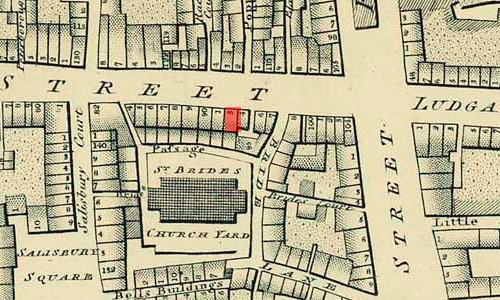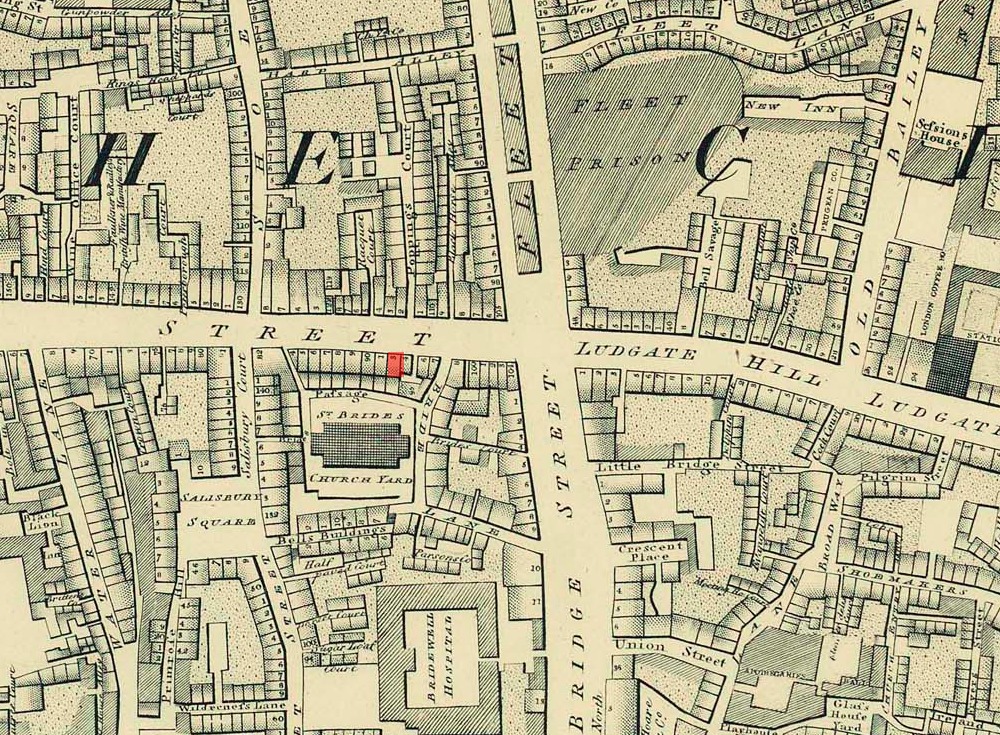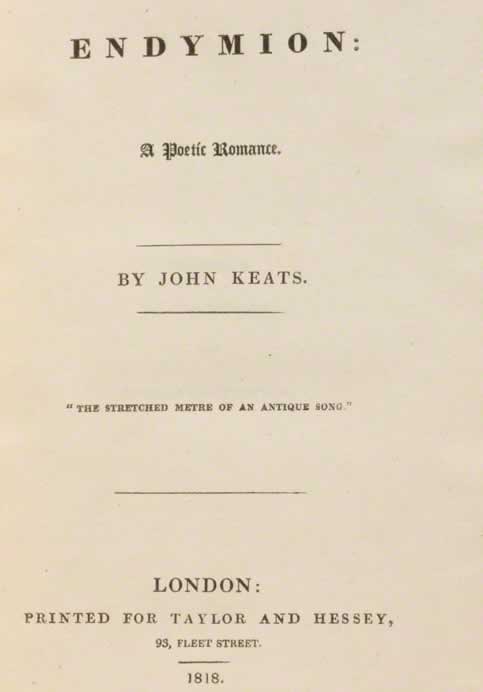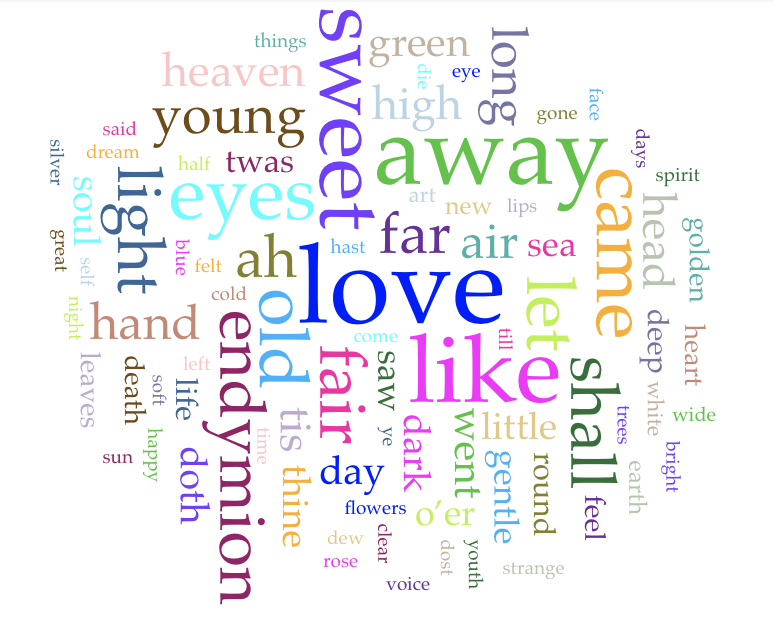April 1818: Endymion Published & Post-Endymion Keats; Pursuit of Beauty & Knowledge—and a Walking Tour
93 Fleet Street, London


The offices of [John] Taylor & [James] Hessey, Publishers/Booksellers, launched 1806.
In the last week of April 1818, Keats, aged 22, publishes his Endymion with Taylor & Hessey, with whom he will also publish his next (and final) 1820 collection. Among others, Taylor & Hessey publish work by Samuel Taylor Coleridge, William Hazlitt, Leigh Hunt, Thomas De Quincey, and Charles Lamb. About two-and-a-half years later, Taylor & Hessey will report a loss on Endymion of over 100 pounds, yet, from the beginning of their relationship with Keats, they fully believe in him and his eventual success as a poet.
Keats calls the 4,050-line Endymion
a test, a trial of my Powers of Imagination
(letters, 8 Oct 1817), but in the poem’s
preface, he awkwardly apologizes for its (and his own) immaturity; thus, from some
quarters,
Keats opens himself up to public belittling and criticism: a glib paraphrase of the
preface
might be, Yes, I know the poem is pretty bad, but take it easy on me. I hope at some point
to do better than this.. So Keats is right: the poem’s overall qualities are
indifferent and uneven. There is also some struggle over the preface to the poem with
his
friend John Hamilton Reynolds, who is working
with the publisher, but Keats expresses that he cares absolutely nothing about the
public,
which he sees as an Enemy
—and he hates Mawkish popularity.
The only humility he
feels is toward the eternal Being, the Principle of Beauty,—and the Memory of great
Men.
He feels it is time to enlarge my vision
(9 April).
Keats has many up-and-down moments in the year-long compositional history of Endymion. The poem has just a few strong passages, and Keats is
perceptive enough to see that, even with its weak foundations, it serves as a necessary
failure in his poetic development; in terms of the poetry, there are passages of both
strain
and carelessness. Even before completion he admits to having a low
opinion of the poem
(28 Sept 1817), and after completing it he points to its slip-shod
nature; with Endymion in mind, he writes, I was never afraid of failure
(8 Oct 1818).
The most famous review of Endymion is by Z
—John Gibson Lockhart—in the August 1818 Blackwood’s Edinburgh Magazine: to a significant degree Z
ridicules the poem for being under the toxic sway of Leigh
Hunt’s Cockney School of poetry
—a slight that neatly, and purposefully, fuses
politics and poetics.

Though the review is also openly coloured by partisanship and class, Z without the ideologically-inspired invective is generally
correct: the poem tackles no sustained problem; it possesses only a few moments of
deep or
complex sense; and it barely has anything original to contribute to the story of (to
paraphrase Keats’s own potted plot, letters 10 September 1817) the Moon’s excessive
love for a
young, solitary, handsome Shepherd. Moreover, that Huntian style is something Keats
needs to
move away from in order to progress: as Lockhart puts it, Keats has adopted Hunt’s
loose,
nerveless versification, and Cockney rhymes.
This, again, is generally correct, and not
unnoticed by Keats, with or without Z’s critical panning. Other, even favorable views
of the
poem, unfavorably note the same Huntian strains. The point was certainly not lost
on Keats.
In sum, the completion of Endymion does not show that Keats is a great poet; it does, however, show that
he is a dedicated poet, one determined to profit from missteps and grow out of his
poetic
immaturity. The poem’s only saving points are those when it brushes up against issues
and
topics like dream/reality, mortality/immortality, and empathetic fellowship; but,
at best,
these passages take up not much more than about 15% of the poem’s total content. A
tough
editor in the mood for cutting that the poem and end up with a decent 500-line lyric
poem, one
mainly void of bowers, flowers, leaves, trees, mists, shades, mosses, drooping things,
green
things, bright things, airy things, fair things, sweetness, and embroidered, embowered
scenes;
you might imagine this editor writing, And please, no more sighs in the poem! And as for
things gold and silver—what? Hair, rocks, sand, buds, palaces, bugles, lakes, rivers,
brooks, clouds . . . cut, cut, cut . . .
. This might sound a little tough and glib at
the same time, but Keats’s own friend—and exacting defender of his poetry—the critic
William Hazlitt, says as much; in his 1822 essay
On Effeminacy of Character,
he notes that while Endymion is delightful and full of fancy
and sweetness, it is deficient in style and substance, with nothing tangible or palpable,
with
no real action or character. Hazlitt’s conclusion: All is soft and fleshy without bone or
muscle.
Hazlitt is right; to follow the metaphor, after Endymion, Keats will have to work out—and
Keats knows as much, and does.
April reveals Keats hatching plans for a walking-tour of Scotland and northern England
with
his close friend, Charles Brown. With some
unbridled enthusiasm, to Benjamin Robert Haydon
he writes that this expedition will necessarily establish his life’s aspirations:
the trip
will make a sort of Prologue to the Life I intend to pursue—that is to write, to study
and
to see all Europe at the lowest expense. I will clamber through the Clouds and exist.
I will
get such an accumulation of stupendous recollections that as I walk through the suburbs
of
London I may not see them
(8 April). And toward the end of the month, with Endymion just about
completely behind him, he firmly tells Taylor
that his cavalier days are gone by,
and that there is but one way for me. The road
lies though application, study, and thought
: I find I can have no enjoyment in the
world but continual drinking of knowledge
—quoting Solomon, get wisdom - get
understanding
(letters, 24 April). Keats ends the letter by hoping to talk with Taylor
about what books he might take with him on his quest for knowledge-seeking.
A few days later, to his friend Reynolds,
Keats’s enthusiasm for future directions continues: he has plans to master Italian
and Greek,
and, as in his letter to Taylor, he expresses that his interests in philosophy and
metaphysics
are growing, and he longs to feast on old Homer, as we have upon Shakespeare
and Milton (letters, 27 April). Keats, then, continues to map out the course of his
poetic progress. He has clear plans and high hopes.
With these kinds of forward-looking and determined comments, Keats clearly signals
a new
phase in his development as a poet, a phase we might call post-Endymion. With the Principle of Beauty
as his premier maxim, and with an
expressed desire to pursue knowledge with deliberate study as another maxim (to get wisdom
- get understanding
), we hear a purposeful poet in April 1818. By the end of the year
and into 1819, such determination takes him to his greatest poetry. The road ahead,
though, is
not clear, and he will have to see his way past the death of his younger brother,
Tom, at the end of 1818, and he will also have
moments of uncertainty, anxiety, depression, fatigue, and indolence—not to mention
acute
financial uncertainty, lingering throat problems, and complex love for a certain Fanny Brawne. Great things are never simple; life is
not a map.


